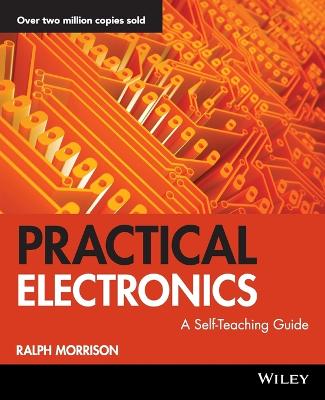Wiley Self-Teaching Guides
2 primary works
Book 177
Learn electricity at your own pace What makes a light bulb work? What overloads a fuse? How does a magnetic field differ from an electrical field? With Electricity: A Self-Teaching Guide, you'll discover the answers to these questions and many more about this powerful, versatile force that everyone uses, yet most of us don't understand. Ralph Morrison demystifies electricity, taking you through the basics step by step. Significantly updated to cover the latest in electrical technology, this easy-to-use guide makes familiar the workings of voltage, current, resistance, power, and other circuit values. You'll discover where electricity comes from, how electric fields cause current to flow, how we harness its tremendous power, and how best to avoid the various pitfalls in many practical applications when the time comes for you to put your knowledge to work. The clearly structured format of Electricity makes it fully accessible, providing an easily understood, comprehensive overview for everyone from the student to the engineer to the hobbyist. Like all Self-Teaching Guides, Electricity allows you to build gradually on what you have learned-at your own pace.
Questions and self-tests reinforce the information in each chapter and allow you to skip ahead or focus on specific areas of concern. Packed with useful, up-to-date information, this clear, concise volume is a valuable learning tool and reference source for anyone who wants to improve his or her understanding of basic electricity.
Questions and self-tests reinforce the information in each chapter and allow you to skip ahead or focus on specific areas of concern. Packed with useful, up-to-date information, this clear, concise volume is a valuable learning tool and reference source for anyone who wants to improve his or her understanding of basic electricity.
Book 178
Learn practical electronics at your own pace What is a semiconductor? How do you lay out circuits to avoid noise and interference? What do inductors and transformers have in common? How does a coaxial cable carry power to an antenna? With Practical Electronics: A Self-Teaching Guide, you'll discover the answers to these questions and many more about the basics of electricity and electronic components. Thoroughly researched for our digital age, this easy-to-use guide makes familiar the workings of transistors, capacitors, diodes, resistors, integrated circuits, and more. Electronics expert Ralph Morrison starts you off with two of the simplest electronic components, showing you how to combine them into circuits and then add more components to create more complex circuits. He includes detailed "learning circuits," which are electronic circuits you can build yourself, even if you have had no prior electronics experience. The clearly structured format of Practical Electronics makes it fully accessible, providing an easily understood, comprehensive overview for everyone from the student to the engineer to the hobbyist.
Like all Self-Teaching Guides, Practical Electronics allows you to build gradually on what you have learned-at your own pace. Questions and self-tests reinforce the information in each chapter and allow you to skip ahead or focus on specific areas of concern. Packed with useful, up-to-date information, this clear, concise volume is a valuable learning tool and reference source for anyone who wants to improve his or her understanding of basic electronics.
Like all Self-Teaching Guides, Practical Electronics allows you to build gradually on what you have learned-at your own pace. Questions and self-tests reinforce the information in each chapter and allow you to skip ahead or focus on specific areas of concern. Packed with useful, up-to-date information, this clear, concise volume is a valuable learning tool and reference source for anyone who wants to improve his or her understanding of basic electronics.

